Views: 292

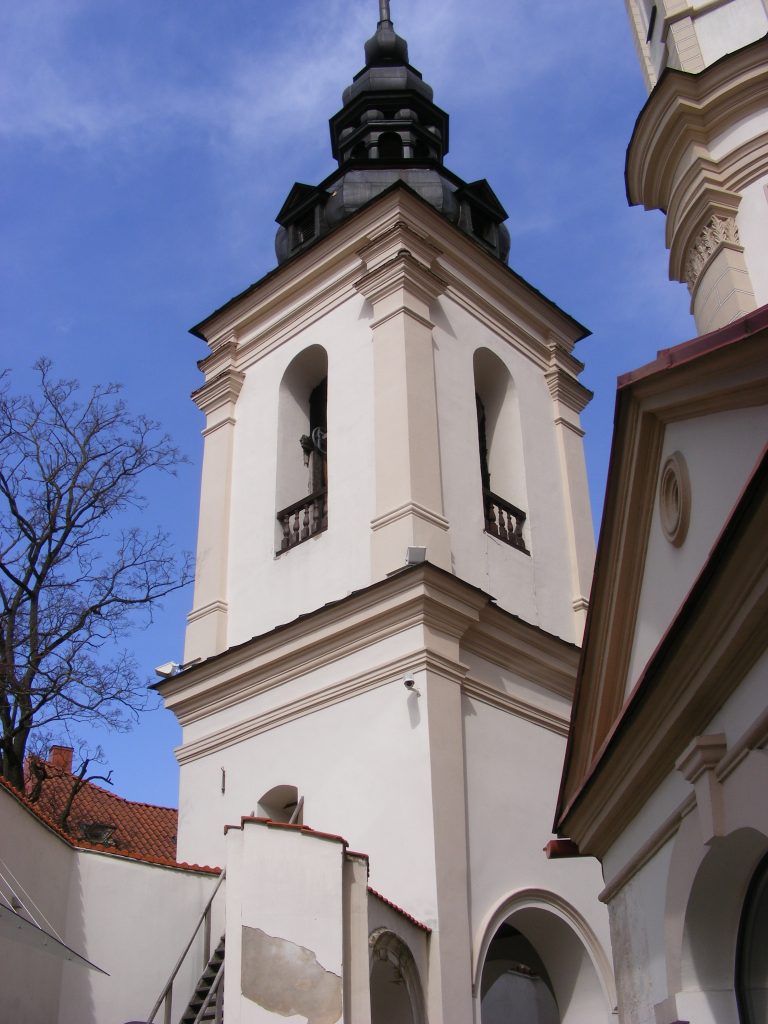

All photos are copyrighted by Vladislav B. Sotirovic
© Vladislav B. Sotirovic 2019

RELATED POSTS

The Town Hall hosted a court, archive, weapons depository, as well as a prison for artisans that had broken the law. Burgomasters also held meetings in the Town Hall, as did the Council of Merchants Since 1991, Vilnius Old Town Hall once again is functioning as a place for holding important events like art exhibitions, concerts, conferences, meetings, etcIn the Middle Ages, the Town Hall Square was a place where physical punishment was carried out. There were gallows and a scaffold nearby, where executions were carried outAll photos are copyrighted by Vladislav B. Sotirovic© Vladislav B. Sotirovic 2019
Continue Reading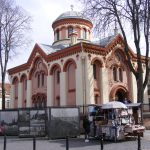
The Russian Orthodox Church of St. Parasceve (or Piatnickaya Church) is located in the centre of Vilnius' Old Town where a Russian Orthodox Church stood since the times of the Lithuanian Grand Duke Algirdas in the mid-14th centurySt. Parasceve Russian Orthodox Church is the oldest surviving Russian Orthodox Church in Lithuania located in the former Russian quarter of the Old TownThe church was reconstructed in the mid-19th century by the famous Russian architect N. ChaginAll photos are copyrighted by Vladislav B. Sotirovic© Vladislav B. Sotirovic 2021
Continue Reading
Choral Synagogue is the place of the only working synagogue and school "Tarahat Hakodesh" in Vilnius This synagogue is built in the Oriental Moorish style and is only survived one out of some 105 before WWII synagogues and other Judaic prayer housesThe exterior contains an inscription in Hebrew "A prayer house is sacred for all nations", and above the pediment the tablets with the Ten Divine Commandments are representedAll photos are copyrighted by Vladislav B. Sotirovic© Vladislav B. Sotirovic 2020
Continue Reading
The Church of the Heart of Jesus is a significant monument of Baroque (finished in 1756). It is the only Roman Catholic church in Lithuania to be built along a Greek Orthodox cross designThe church has a large octagonal cupola (dome) and a very reach the elegant exterior. The interior is no less magnificent, although it was severely damaged during the Soviet timeAfter 1945, a prison was established in the church and convent buildings. The church interior and the plan of the convent buildings were transformed. After 1990, the sacral buildings are returned to their former ownersAll photos are copyrighted by Vladislav B. Sotirovic© Vladislav B. Sotirovic 2020
Continue Reading
Three crosses are believed to have first been erected on this hill above the Old Town of Vilnius in the 17th century to commemorate a group of 14 Franciscan monks from a nearby monastery who were martyred in the 14th century The monument has changed several times. The present one was built in 1989 to replace one that had been removed by the Soviet authorities in the 1950sOne of the best panoramic views of the Old Town of Vilnius is offered from the Hill of Three CrossesAll photos are copyrighted by Vladislav B. Sotirovic© Vladislav B. Sotirovic 2020
Continue Reading
A geographical centre of Europe - 25 km far from Vilnius. From 2015 Summer You will get a special Certificate that you have visited the Geographical center of Europe. Don't miss the chance to get it for freeThe Baltic States of Europe - Estonia, Latvia & LithuaniaVytis (The Knight) - The Coat of Arm of both historical Grand Duchy of Lithuania and present-day the Republic of LithuaniaOrigins of images: Facebook, Twitter, Wikimedia, Wikipedia, Flickr, Google, Imageinjection & Pinterest.Read our Disclaimer/Legal Statement!Donate to Support UsWe would like to ask you to consider a small donation to help our team keep working.
Continue Reading
Šiltadaržio St. is ending at Bernardinų St.Art Printing House Culture Center with the Theater in the streetIn the streeet, there is a Toy Museum and other cultural atractionsAll photos are copyrighted by Vladislav B. Sotirovic© Vladislav B. Sotirovic 2020
Continue Reading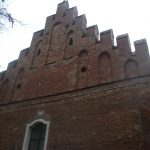
The church was named after St. Nicholas, who was the Bishop of Myra and the patron of travelers and merchants. The character of Santa Claus is thought to be based on this saintThe Church of St. Nicholas in Vilnius is the oldest surviving Late Gothic church in Lithuania. The small church was used by the Franciscan monks, who lived nearbyThe interior of the church is decorated with ornate rib and groin vaults. A 16th-century picture of St. Nicholas with a silver frame is located on the left altarAll photos are copyrighted by Vladislav B. Sotirovic© Vladislav B. Sotirovic 2018
Continue Reading
One of the Latin inscriptions: "This house is that of Urania: be gone profane worries! Here the humble Earth is scorned: from here one rises to the stars"Here it was a Jesuit pharmacy. Medical herbs were grown in the courtyardThe buildings of the Observatory Courtyard are the oldest in the university ensembleAll photos are copyrighted by Vladislav B. Sotirovic© Vladislav B. Sotirovic 2018
Continue Reading
Wonderful panoramic view can be seen from the roof (platform) of Gediminas Tower (Upper Castle Tower)Despite wars and destructions, the architectural ensemble of Vilnius Old Town remains unique. Baroque domes and towers of Vilnius Old Town coexist with an irregular medieval city plan Vilnius Old Town is lacking German or Scandinavian features, rather reminiscent of Prague or Rome, Vilnius differs greatly from the other Baltic capitalsAll photos are copyrighted by Vladislav B. Sotirovic© Vladislav B. Sotirovic 2019
Continue Reading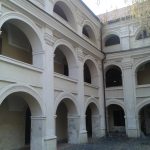
Alumnatas Courtyard was the location for the student dormitory of a pontifical seminary in which seminary students (alumni) and future Greek Catholic (Uniate) priests lived. The courtyard is located in the Monastery Quarter of Vilnius very close to the Old Campus of Vilnius University and Presidential Palace (Prezidentura). Alumnatas (the Greek Catholic/Uniate) Courtyard in probably the most impressive and beautiful courtyards in Old Town of VilniusIn the mid-17th century, the courtyard was remodelledin an Italian Renaissance style , along with a chapelLater the buldings around Alumnatas Courtyard passed to Vilnius UniversityAll photos are copyrighted by Vladislav B. Sotirovic© Vladislav B. Sotirovic 2018
Continue Reading
The Royal Palace at the foot of the Castle Hill was a residence of the Grand Duke of LithuaniaThe Lower Castle is related with the times of Sigismund the Old and Sigismund August, Qween Nona and Barbora Radvilaitė (16th century)In the 16th century the Royal Palace with its Inner Courtyard was an Italian-style palace with four wings and attics. The building around encircled the Inner Courtyard of 2,500 square metres and were connected to the eastern wall of the Cathedral Basilica by a roofed galleryAll photos are copyrighted by Vladislav B. Sotirovic© Vladislav B. Sotirovic 2018
Continue Reading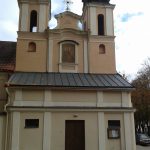
According to legend, the monastery and wooden church were built circa 1332 in the burial spot of the Franciscan monks that had been martyred by Lithuanian pagansThe building complex is formed in the mid-18th century. Today, the church possess six Late Baroque-style altars, with the main altar having a picture of the Holy Virgin Mary that is considered to be miraculous. A copy of the picture is painted on the façade in 1742 The monument to famous Lithuanian neo-Classicist architect Laurinas Gucevičius, the founder of Vilnius neo-Classicism, is erected in 1994 in the square in front of the church. All photos are copyrighted by Vladislav B. Sotirovic© Vladislav B. Sotirovic 2020
Continue Reading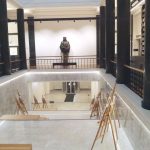
One of the meeting rooms in the library for public lectures, book presentations and discussionsOne of the exibition hallsOne of the Reading RoomsAll photos are copyrighted by Vladislav B. Sotirovic© Vladislav B. Sotirovic 2020
Continue Reading
Christmas Tree decoration at the Cathedral Basilica Square in Vilnius. The belfry is seen in the backgroundChristmas decoration in front of the principal building of the castle complex in Vilnius Old Town - Cathedral BasilicaCathedral Basilica of Vilnius is erected on the place of the pagan altar with a ceasred fire to the pagan god Perkūnas (god of Thunder)All photos are copyrighted by Vladislav B. Sotirovic© Vladislav B. Sotirovic 2019
Continue Reading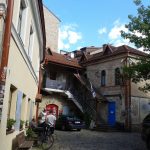
The Užupis Art Incubator is open to all beginning and experienced artistsA view from the Užupis Art Incubator to the Russian Orthodox Church of the Blessed Mother of GodThe River of Vilnia seen from the Užupis Art IncubatorAll photos are copyrighted by Vladislav B. Sotirovic© Vladislav B. Sotirovic 2020
Continue Reading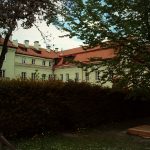
A small doorway in a plain building at Pilies (Castle) Street leads through a vaulted passage into a large yard. The yard was the original place of the Botanical Garden of the Vilnius University. It was founded by a French botanist, Jean Gilibert, in 1782The Botanical Garden remained in this yard for 10 years when it was transferred to Sereikiškių Park, and as well as provided accommodation for the university professors. Before becoming the Botanic Garden, the buildings around had been a college for noblemen. After the university was closed in the mid-19th century, the buildings were used by the Medical AcademyThe yard is the best and most probably the single place in Vilnius from where to admire the spectacularly decorated top of the apse of the Church of St. John's (the church in the grand courtyard of the University of Vilnius)All photos are copyrighted by Vladislav B. Sotirovic© Vladislav ...
Continue Reading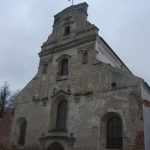
The church is Gothic, with some Baroque forms that it acquired in the late 18th centuryIn 1812 the church was partly destroyed by the French army that used it as a granary. Since 1864 the church was closed and converted into an archive The church adjoins a monastery, the oldest in Lithuania, whose construction began in Gediminas' times (in 1334)All photos are copyrighted by Vladislav B. Sotirovic© Vladislav B. Sotirovic 2018
Continue Reading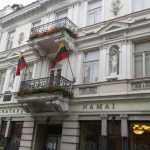
A museum operates today in the House of Signatories, along with a memorial hall where the act of Lithuania's independence was signed on February 16th, 1918 when Lithuania was under the German occupation and administration during WWI (1915-1918)The first floor of the house with statues symbolizing agriculture and fishing is very decorative. Niches on the second floor hold two male bustsHaving acquired this house in the late 19th century, Karol Sztral reconstructed it according to architect Aleksei Polozov's project in the style of HistoricismAll photos are copyrighted by Vladislav B. Sotirovic© Vladislav B. Sotirovic 2019
Continue Reading
The organ, made by famous German master Adam G. Casparini in 1776, is one of the most valuable cultural monuments of Lithuania. The organ itself is the only surviving original 18th-century instrument in LithuaniaThe church has many Baroque frescoes. In the cupola, there is a multi-figural composition "Apotheosis of the Holy Spirit" (neo-Baroque, 19th century)The altars and the pulpit are lavishly decorated with round and relief sculptures and ornamentation All photos are copyrighted by Vladislav B. Sotirovic© Vladislav B. Sotirovic 2018
Continue ReadingVilnius Old Town Hall
The Church of St. Parasceve
Choral Synagogue in Vilnius
Church of the Heart of Jesus and the Convent of the Visitationists in Vilnius
The Hill of Three Crosses
Lithuania – Geographical Center of Europe
Šiltadaržio St. in Vilnius
Church of St. Nicholas
The Observatory Courtyard of the Vilnius University
Vilnius Old Town Panoramic View
Alumnatas Courtyard
Royal Palace – Inner Courtyard
Church of the Holy Cross & former Hospitaller Monastery
Martynas Mažvydas National Library of Lithuania (Inside)
Vilnius Christmas Tree
Užupis Art Incubator (1)
Courtyard of the Medical Collegium (2)
Church of the Assumption of the Holy Virgin Mary and the Franciscan Monastery
The House of Signatories (Karol Sztral’s House)
Dominican Church of the Holy Spirit (Interior)


